Keep your chickens healthy and warm during the cold winter months with this guide on properly winterizing your chicken coop.
As the cold winds begin to blow and snowflakes start to fall, it's time to think about preparing your feathered friends for the winter season.
Winterizing a chicken coop and run may seem like a daunting task, but it's really not! With a little time and observation you can ensure your flock stays comfortable, healthy, and productive even in the coldest months.
Properly winterizing your chicken coop and run is not just about keeping your chickens warm, it's also about maintaining their overall health and egg production. From deep litter bedding to adding insulation, to ensuring your chickens' water doesn't freeze, every step you take contributes to the quality of life of your favorite flock.
Here's how we winterized our chicken coop to withstand zone 3 winters and everything Northern Alberta can throw at it:

As an Amazon Associate I earn from qualifying purchases.
Jump to:
Reduce Wind
Most chickens are great at handling the cold, obviously, cold hardy breeds are better adapted to cold temperatures than less hardy birds but they all can handle some cold with ease.
The major reason chickens can handle such cold weather is that they are wearing a down jacket! Warmth is trapped within small air pockets all around their bodies that are formed between the feathers.
In cold weather, one of the largest enemies to your flock's comfort is the wind. Cold winds penetrate through the feathers and whisk away heat that your birds have produced, leaving them cold and working much harder to stay warm.
To address this problem in both our coop and our run, we did a few different things:
Insulated Vestibule:
We intentionally placed the coop facing south to capture any solar energy it could during the cold months. By orienting the windows and the door to the south, we ensured that they would capture the most sunlight while the sun is low in the winter skies.
But, that presented a problem. The opening to the chicken run faced west, which meant the prevailing west winds were free to blow straight into the coop.
Our solution to frigid winter air blowing directly into the coop was to build an insulated vestibule. And it works fantastic, the chickens walk in then take a 90 degree turn followed by another 90 degree turn to gain access to the coop. This stops a tremendous amount of wind from blowing straight into the coop.
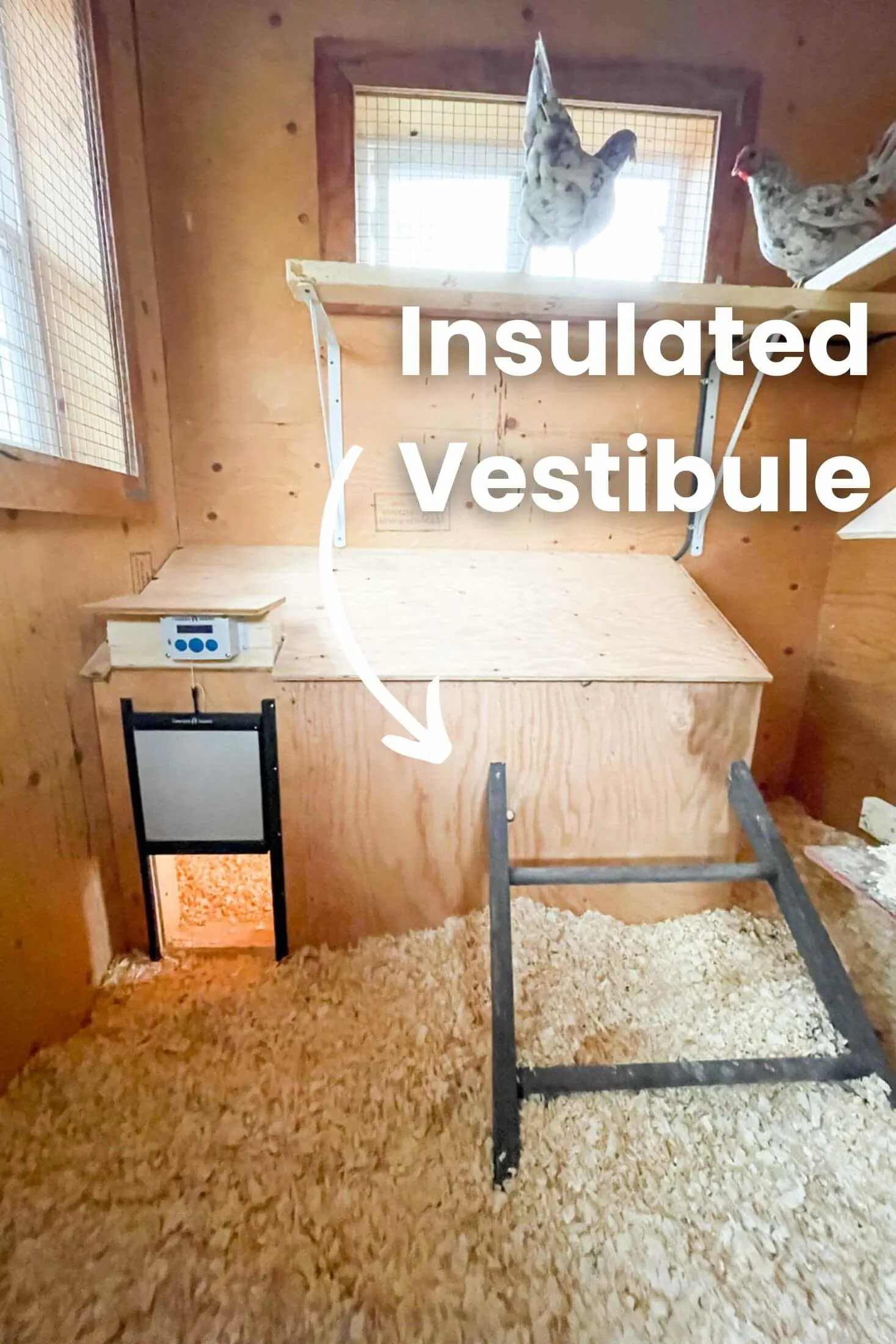
Enclose The Run:
During the winter months here in Northern Alberta, we can get temperatures as low as -45c (-49f) and windchills as low as, and even colder than, -50c (-58f).
You'd think those awful temperatures and windchills would happen late into the night when all of the birds are tucked in for the night. But in my experience, it's usually the coldest right before sunrise and it's not uncommon for our birds to be outside right around sunrise.
To mitigate that, Kevin and I searched high and low and found some "transparent" tarps. We truly believe that the sunshine and fresh air is good for our flock no matter the weather, so we took many steps to ensure they were comfortable outside.
We did not cover the top of the run. In our chicken coop tour, I showed how we added mesh to the top of the run but specifically chose wide openings to allow sufficient snow shed. Our goal was not to engineer a roof that could withstand snow load, but rather one that protected the birds from predators and naturally allowed snow to fall through.

Apply It:
Implementing these strategies will require some planning and adaptation based on your own flock's needs and your local climate. You can start by assessing your existing coop and run for any areas where the wind could penetrate. If your coop door faces the direction of prevailing winds, consider building an insulated vestibule like the one mentioned above, or at least creating some form of windbreak to stop cold winds from blowing straight into the coop.
For enclosing the run, transparent tarps can be a great solution, allowing your chickens to still get sunlight and fresh air while being protected from harsh winds. Remember, the goal isn't to completely seal off the run but rather to create a barrier against the wind. Avoid covering the run with a solid roof if your structure isn't structurally sound enough to handle the snow load.
Remember, every situation is unique, so these ideas will likely need to be modified to suit your specific circumstances. What's important is ensuring your chickens are comfortable and safe in all weather conditions. By taking steps to reduce wind exposure, you're helping your flock conserve energy and stay warm throughout the winter.
Love video content? Check out our Chicken Coop Winterization Video On YouTube!
Add Insulation
One of the best ways to keep your birds warm in the winter months is by insulating the spaces they frequent. Insulation helps to reduce cold drafts and keep in heat produced by the flock.
Now, many people will claim chickens don't need insulation, they only need wind protection, but I have seen too many posts in chicken keeping groups from people who lost chickens at bitterly cold temperatures to even suggest risking it.
The cold may not necessarily spell death for your birds but it can absolutely harm their health and well-being. As well as their egg laying and if you're raising chickens for eggs - it's kinda nice to have eggs!
Insulate The Coop
Our coop was built completely insulated to withstand our climate. It's got full 2x4 framing with insulation on the walls, ceiling, and floor. It was built with insulated windows and door.
If you don't have an insulated coop and are in an area with less severe winter weather, an easy way to reduce cold permeation and heat loss is to put heavy curtains over the windows and run door in your coop.
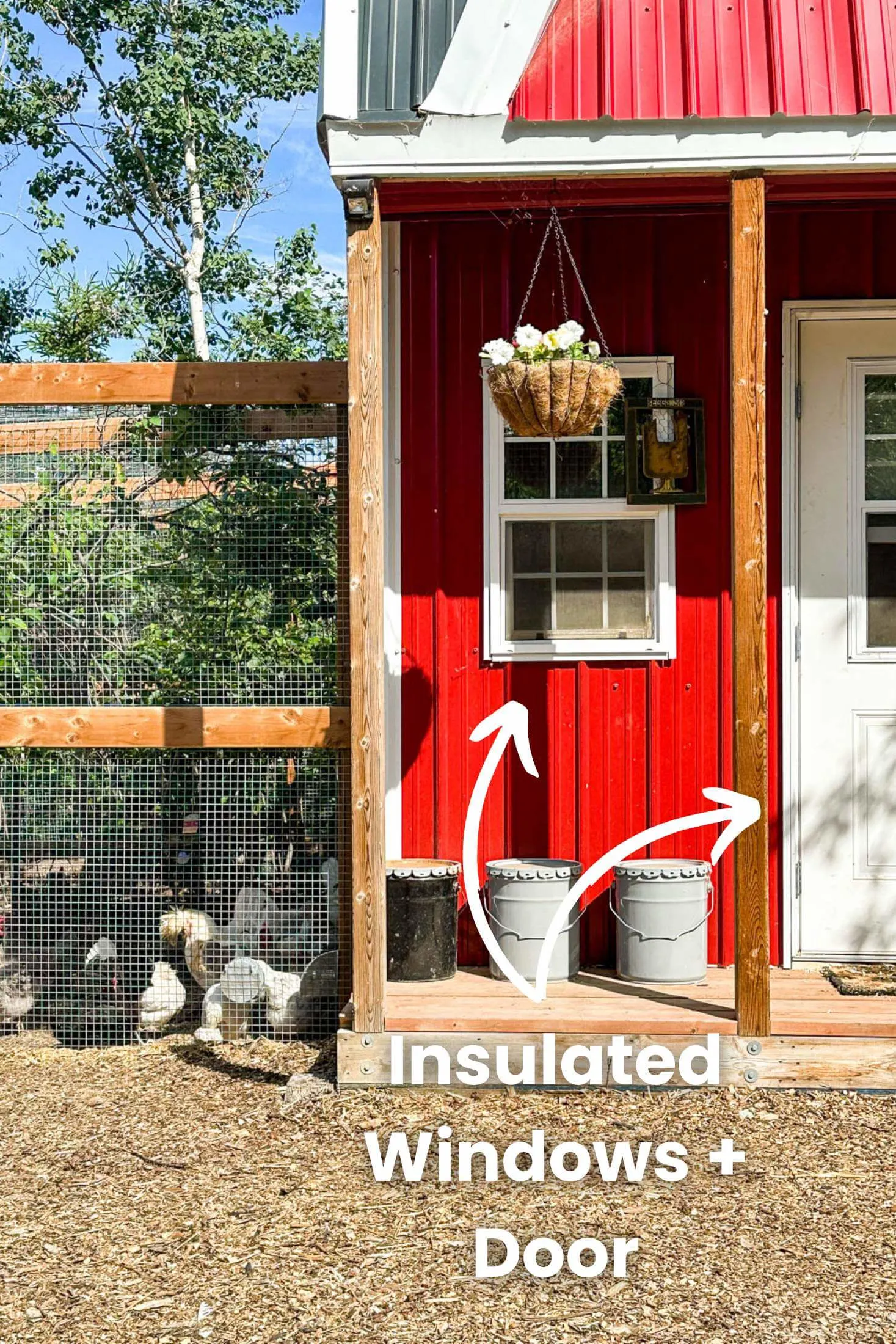
Insulate The Floor
One of the easiest, cheapest ways to insulate the floor of your coop is to use the deep litter method! And when I say easiest, I really do mean easiest!
Deep litter bedding can help maintain warmth and insulate the coop during the winter months. If you're unfamiliar, deep litter is basically a waste management system that involves continuously adding fresh bedding material to the coop and allowing it to accumulate.
Over time, the chickens' droppings mix with bedding and the natural decomposition process generates heat, which can help to warm the coop.
In addition to the heat generated by decomposition, the thick layer of bedding also serves as an insulator, preventing heat loss and keeping the cold from seeping in from the floor.
It's a natural, eco-friendly way to keep your chickens warm during the colder months. We also love that it reduces waste from unused bedding and work - no shoveling out the coop at -40!
While this method does not call for cleaning out the coop for several months at a time, it does require regular turning of the bedding to ensure proper composting and to prevent the buildup of harmful ammonia gases. Also, it’s crucial to start the deep litter method before the onset of winter so that the composting process has begun and is generating heat by the time the cold weather sets in.

Insulate The Ground
I don't know about your chickens, but mine are pretty princesses who do not like to walk in the snow. And it's ok, Kevin and I are more than happy to oblige!
We like to tarp off the opening to the chicken coop and lay down a heavy layer of straw so that even if the weather is ultra bad and snowy, the birds still have somewhere to go that's somewhat warm and out of the elements.
That little area that got the most use out of all of the spaces in the entire chicken run all winter long!
The other thing we did to increase their comfort and encourage them to go outside of the coop was to spread straw in the run itself. Over the winter, this was super manageable, if we had snowfalls under an inch all it took to refresh the straw was a quick rake. Snowfalls over an inch required a fresh layer of straw.
This created a bit of (disgusting) work on the backend, but it was absolutely worth it. Unfortunately, come spring, it was time to rake the straw out of the chicken run. It was wet, soaked in poops, and smelled horrifying. BUT, it was a great contribution to our compost pile and it will undoubtedly nourish our food forests and garden later on.

Apply It:
So, what steps can you take to insulate your coop and run this winter?
It all depends on the materials you have available and the severity of the weather in your area.
Start by taking a look at existing structures and assess what needs to be done. Then, decide if you need to add curtains, and tarps, or increase the amount of bedding in your run.
More Chicken Keeping Guides:
Improve Ventilation
The holy grail in the coop world is to have the right balance of wind protection, insulation, and ventilation without having drafts.
This equation becomes infinitely more difficult when you're factoring in insulation and trying to trap heat. Trapping warm air also means trapping ammonia fumes and humidity, both of which are bad for your flock's health.
The aim of ventilation is to reduce ammonia fumes, reduce the likelihood of frostbite and respiratory issues by removing moisture, and increase fresh oxygen-rich air in the coop.
The way that we deal with the ventilation situation, as I like to call it, is slightly brilliant if I do say so myself. We have a bathroom exhaust fan mounted to the very top of the roof where the hot, moisture-rich air gathers.
The fan is plugged into a timer that runs for 15 minutes every hour. We have experimented with different times, but this seems to be the best one for us, that balances heat retention, ventilation, and fresh air required.
I like this method because it doesn't cause drafts around any of the birds, so while eave venting is a great passive way to create airflow, it can also create drafts that can blow the warmth right out from between the feathers of our hens.
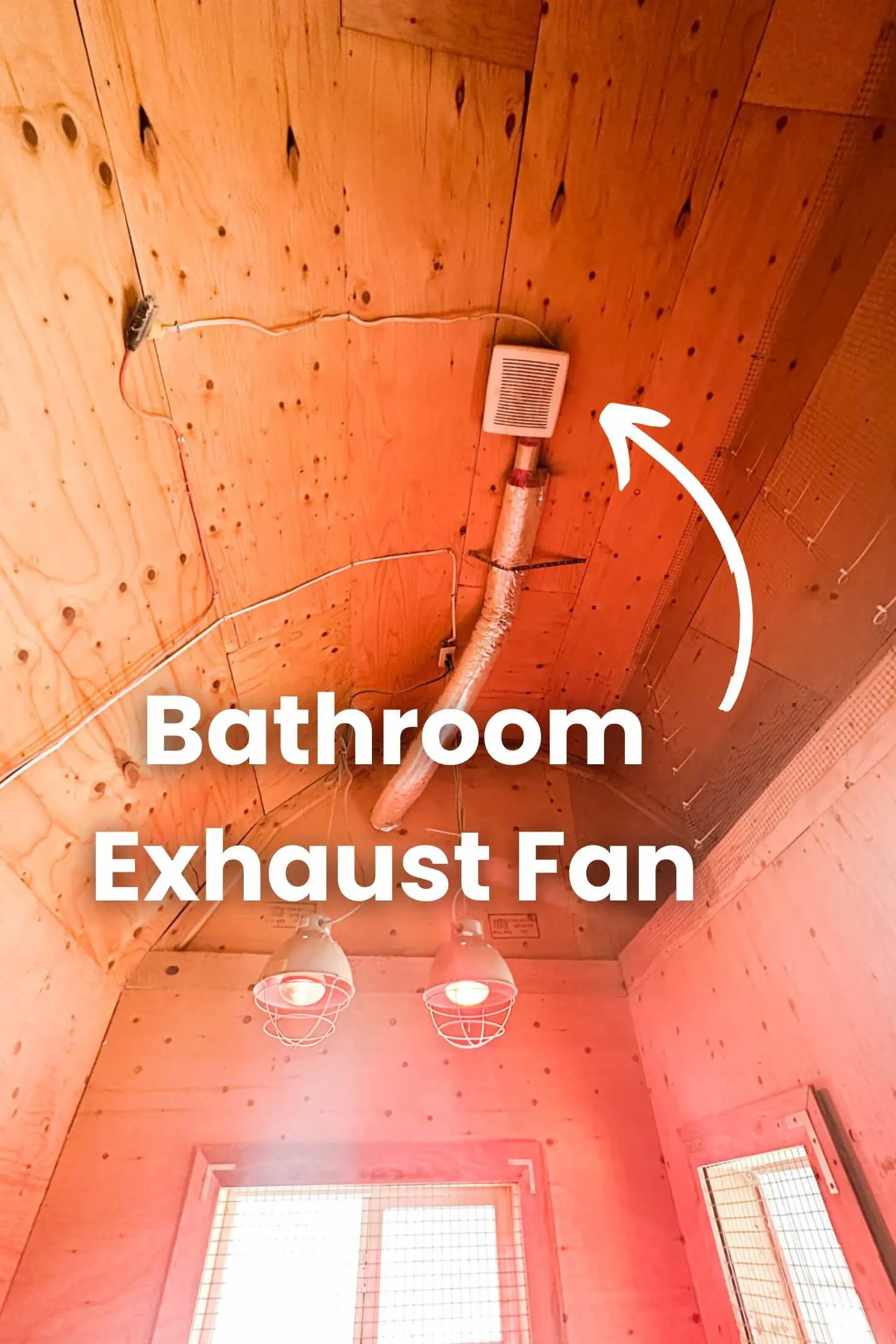
Apply It:
Each coop is different than the next, and it’s impossible to give a one-size-fits-all solution when it comes to winterizing ventilation.
But here are some tips that have worked for us:
- Monitor the temperature of your coop daily and adjust your ventilation methods accordingly.
- Invest in a bathroom exhaust fan and timer combo, as they work great for reducing moisture and providing fresh air without blowing a chill into the coop.
- Place any vents up high where hot air will naturally rise, as this will help to reduce drafts in lower areas of your coop.
Winterizing your chicken coop doesn't have to be complicated or overwhelming. Just remember ventilation is allowing air to circulate in the coop and then leave while drafts are like wind blowing on your birds.
Watch Our Winter Coop Tour!
Keep Food And Water Outside
We believe in keeping food and water outside of the coop year round, for a number of reasons:
- keeps the coop cleaner
- keeps pests at bay
- reduces the likelihood of mold
- keeps humidity levels down
- and we like them to go outside - having waterers and feeders indoors reduces incentive to be outside.
Especially in winter weather, at the very least, keeping waterers outside needs to be done. This will reduce moisture and humidity in the coop. Humidity is the main cause of frostbite on your birds' combs and toes.
Provide A Protected Space
If you want your birds to go outside to eat, drink, and dust bath, provide them a sheltered place.
In the fall of 2022, we built a small, free standing lean-to-style shelter for the chicken run. It's butted against the side of the coop. Each 4 foot section has a lifting lid for easy access.
This way we can keep the feeder, waterers, and dustbath dry and free of snow all winter. Kevin enclosed the open side with a transparent tarp and laid straw mulch all over the ground to keep them off the frozen earth.
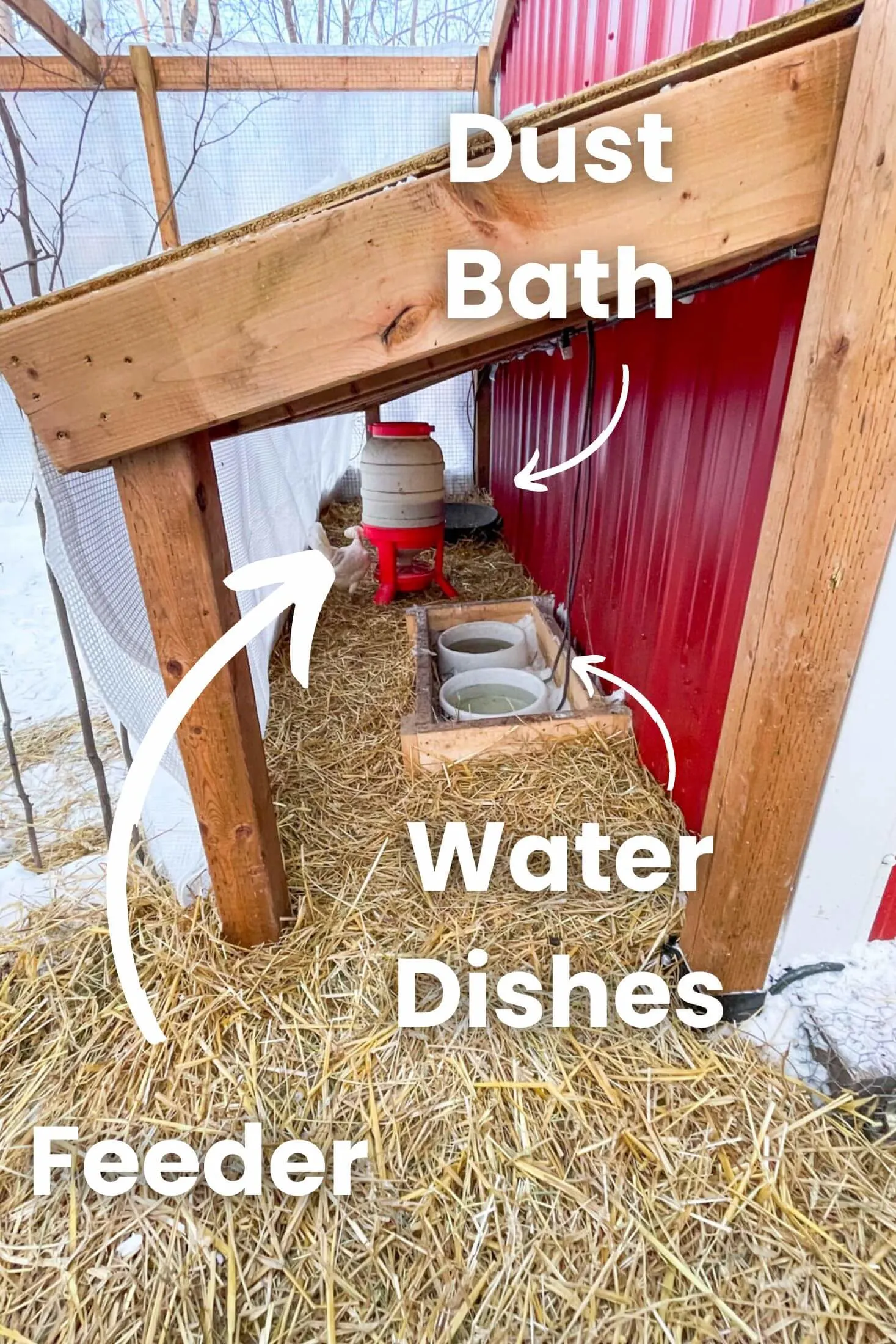
Keep The Waterer From Freezing
By now you're wondering how do I keep my chickens water from freezing? There are many ways to do this, but our chosen option was to build a small wooden frame to hold 2 heated dog water dishes.
The wooden frame gave the birds a place to perch without dipping their toes in the water and the heated dog bowls kept the water thawed every single day all winter long. Despite the frigid temps!
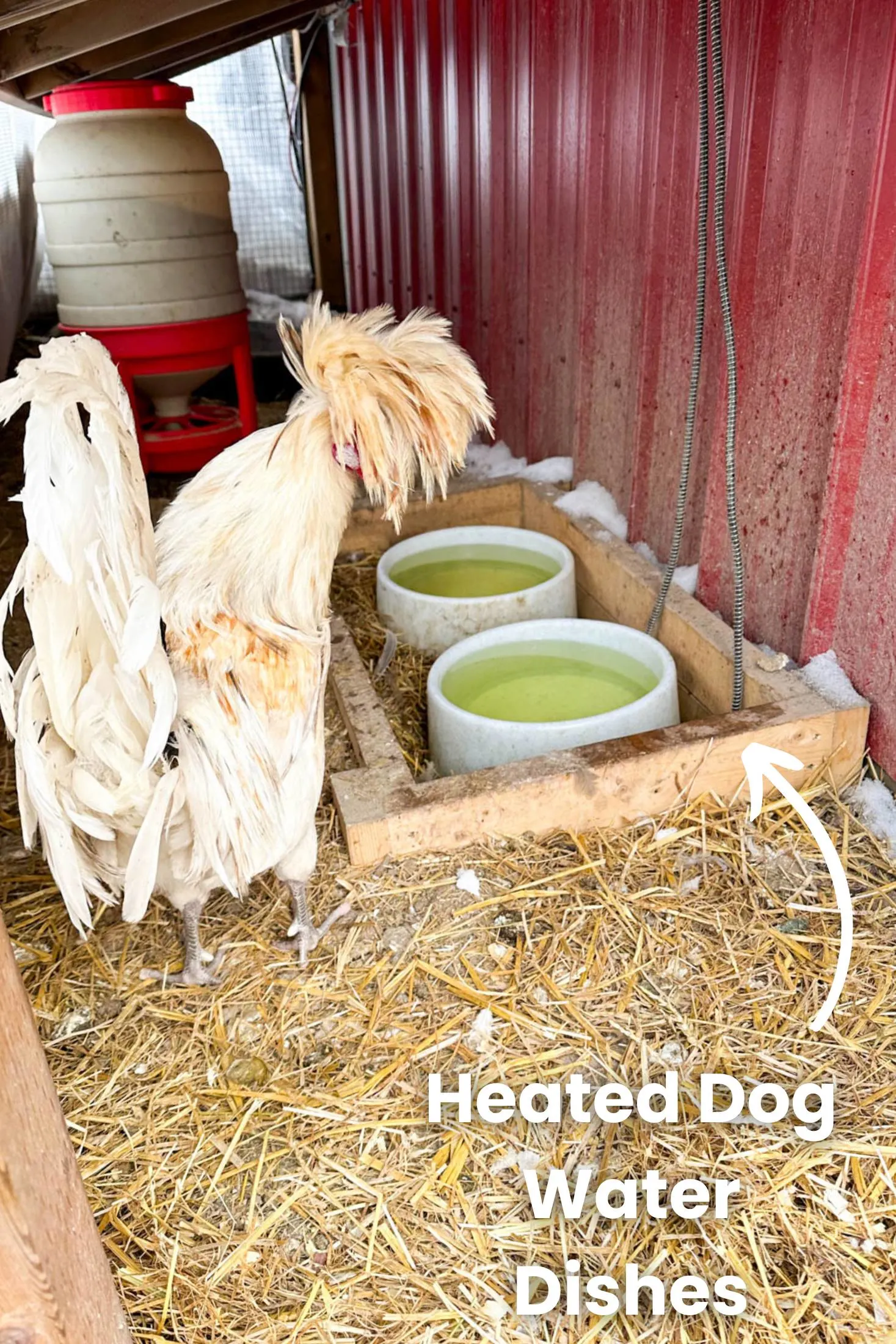
Have A Plan For Heat
I saved the most controversial for last!
The chickening world is so divided on this - and for good reason. Many people are devoutly in camp "no heat lamp" because they've seen many tragedies from unsecured, unmaintained heat lamps in coops that were not intended to have heat lamps.
But to simply say that providing supplemental heat to chickens should never happen is doing new chicken keepers in cold climates a massive disservice. Many people who claim to be anti-heat lamp don't live in Zone 3 where the cold can give you frostbite in less 90 seconds and struggle with keeping their animals happy and healthy in those extremes. What works in a more temperate climate doesn't always work in a cold climate.
Should you always run a heat lamp? Probably not necessary.
Should you have a plan in place for extreme weather? Probably not a bad idea.

Heat Lamps
This is what works for us, and you should 100% research how to properly use heat lamps in your coop before doing so.
We tried our hardest to avoid using heat lamps, although they were installed and ready to go, but when we hit a prolonged cold snap with lows of -40 to -45c (-40 to -49f), we felt it was in the best interest of our flock to add supplemental heat to the coop.
We ensured that these lamps were secure and I went so far as to clarify that the set-up was acceptable to my insurance company before we even used them!
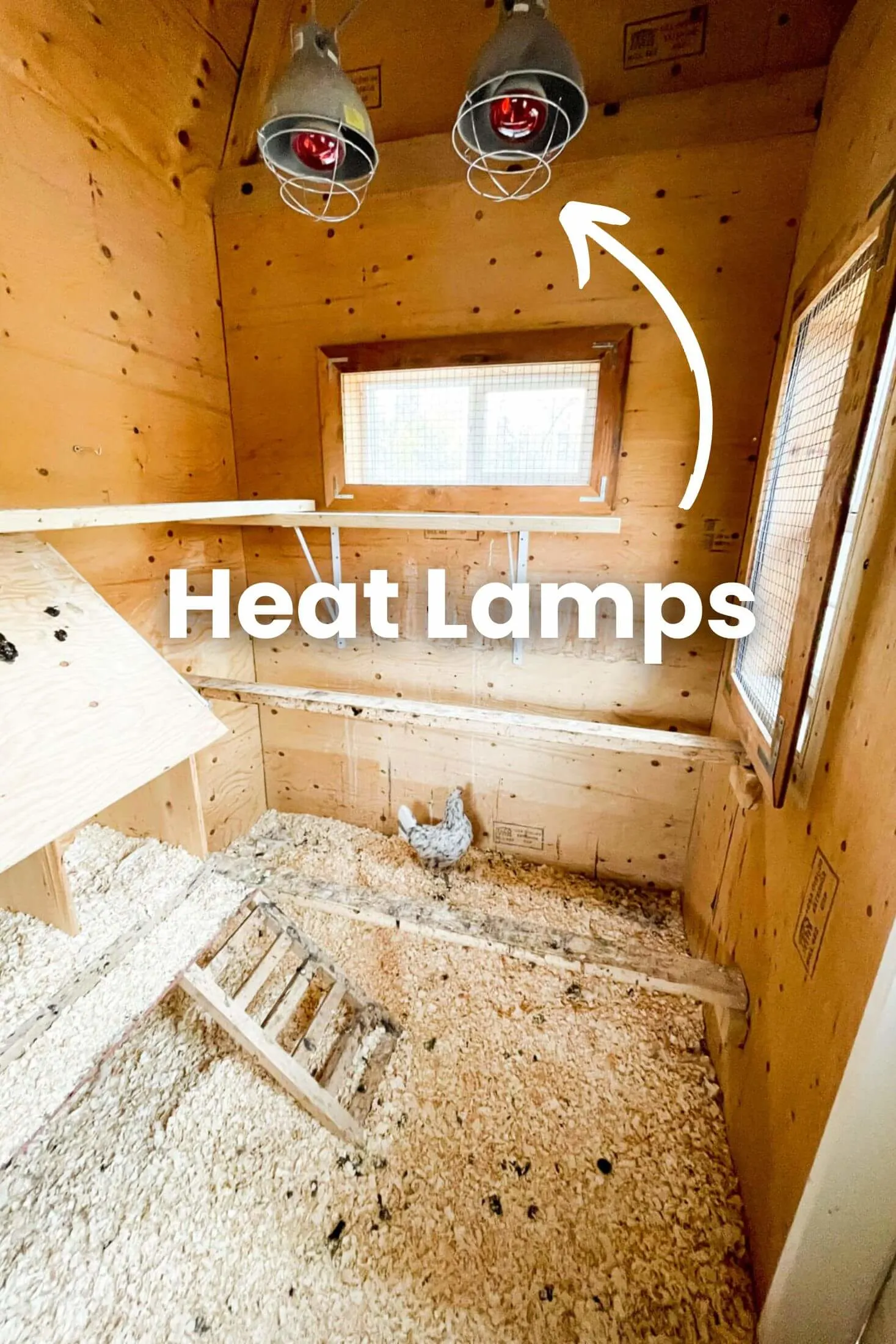
Apply It:
Just like with ventilation, the best approach to heating your coop will be different for everyone. There are many options out there to heat the coop without adding heat lamps, from heated plates to heated roosting bars.
Whatever method you choose, make sure to take the time to properly install whatever heating method you choose, test your system often, and maintain it. I clean dust and debris from my heat lamps very regularly, and I monitor that everything is working as it should while in use. It takes only a few seconds when I'm in the coop each day and results in much happier birds and less stress!

Thoughts From The Homestead
There is no one size fits all solution to winterizing your chicken coop. It will take a little time to observe your situation and apply solutions that make sense for your coop, climate, and flock.
The goal is to ensure that your birds are kept safe, warm, and healthy during the cold winter months. Hopefully, you'll be inspired by our steps and will be able to find the right balance of wind protection, insulation, and ventilation without having drafts or putting your flock at risk.
Ultimately, the best approach to keeping your chickens warm and healthy during the winter is to monitor their environment regularly and be prepared with a plan in place for extreme weather conditions. With some patience and dedication, you can ensure that your flock survives the winter months in optimal health!
Pin This Guide To Winterizing Your Chicken Coop!


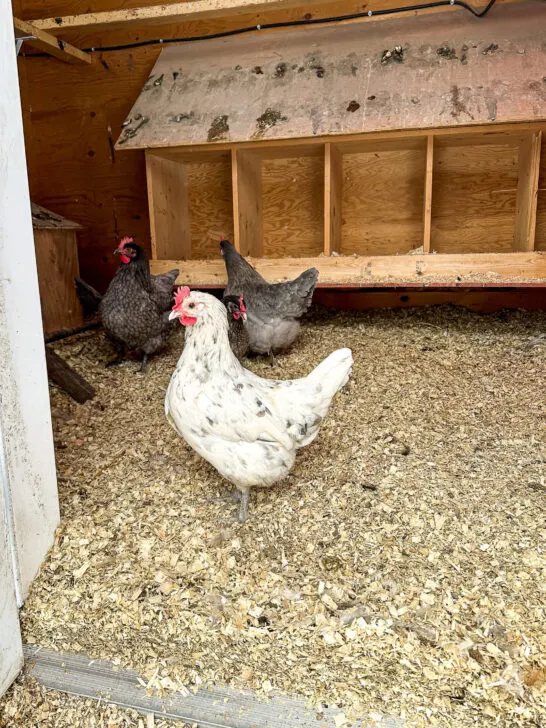
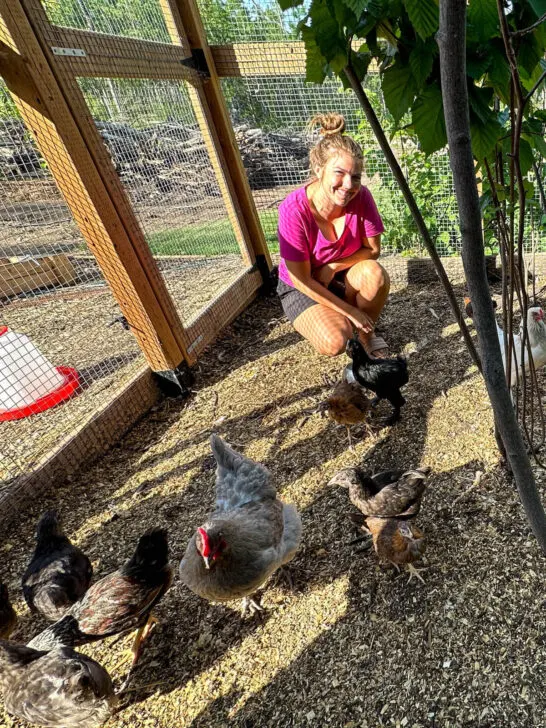
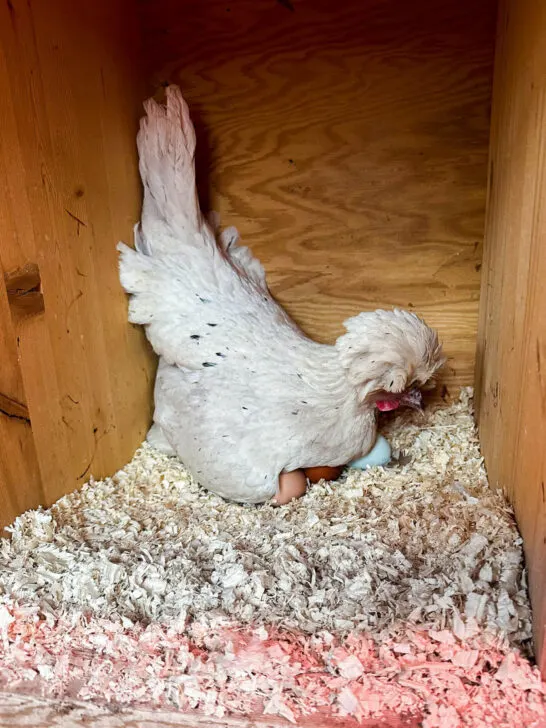
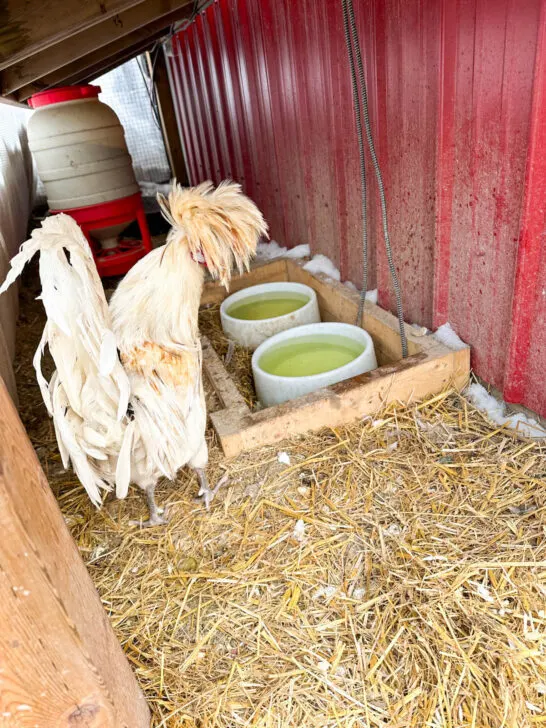
Kevin
Wednesday 4th of October 2023
Great write-up. Love the vestibule idea, first time I've seen one. I was considering an igloo style entrance but like yours. You may wish to consider a poop board and kitty litter scoop, as I find mine works great.
Ally
Saturday 4th of November 2023
Thanks! I have to give kudos for that idea to my husband, also a Kevin! LOL do you find your birds roost on the boards?